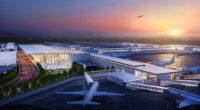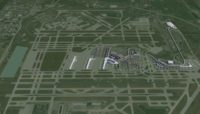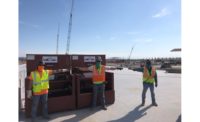SOM Director Derek Moore says that convenience will be a major focus of the evolving design of the now-approved Kansas City International Airport single-terminal redesign. He also pledged to use feedback gained from public meetings in the coming weeks to deliver a design that residents and travelers want.
"The competition we participated in with Clark and the other constructors over the summer did not require a design submission," Moore says. "The other three competitors did submit designs. We were very sincere in our statement in the proposal that we didn’t come in with any preconceived ideas about the design, we want to engage the public, the aviation department and the city at large in the process."
This week begins a series of public meetings wherein SOM, Clark and developer Edgemoor Infrastructure and Real Estate will engage citizens in Kansas City's six council districts and another meeting in Johnson County, Kansas, a county whose residents heavily use the existing airport.
Moore asserted that the H-shaped, single-terminal design shown in renderings before the public referendum on the airport was the result of a multiyear planning process led by the Aviation Department and that the configuration envisioned is the least-costly, least-disruptive and most cost-efficient solution but it's still only a preliminary design.
"It provides best platform for expanded service," Moore says. "They were hamstrung from growing due to the existing terminals. A single-terminal will be way more efficient to operate for maintenance."
Because the new single terminal will be built almost entirely on the existing terminal A site, it will no affect ongoing operations of terminals B and C during construction and the airport will still have that land available for future expansion, including new runway capacity.
KCI's original 1966 master plan drawings were a vision directly out of the age of supersonic transport.
"It was very forward-looking, not just in its planning concept but in the architectural language envisioned at the time," Moore says. "Something commonplace here in Kansas City was people waving at arriving customers because the gates are so close. That type of see-through visibility is something we would love to replicate in the new terminal. It’s the connectedness and perception of convenience that we would like to replicate."
While the preliminary design provides for expanded and modern TSA security checkpoints, Moore says the final design needs to feel like a place that isn’t hemmed-in and crowded as the security experience is in KCI's smaller terminals today.
"Convenience, convenience, convenience is what everyone mentions about the existing terminals" he says. "If we can replicate that with modern systems and compliance that is certainly one objective."






Post a comment to this article
Report Abusive Comment